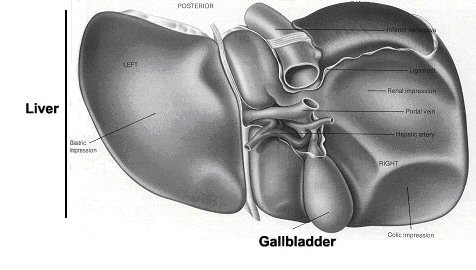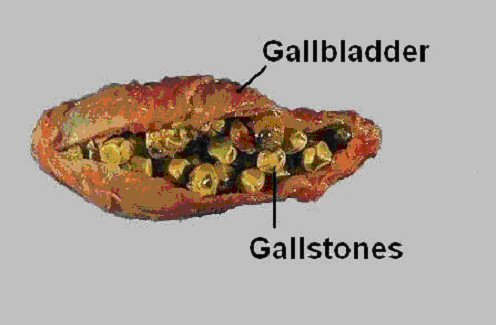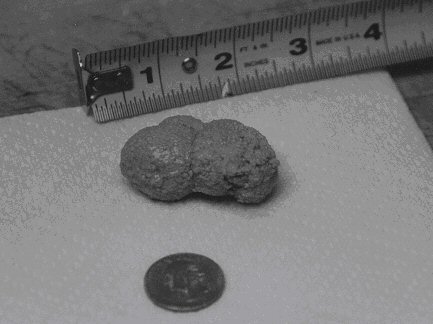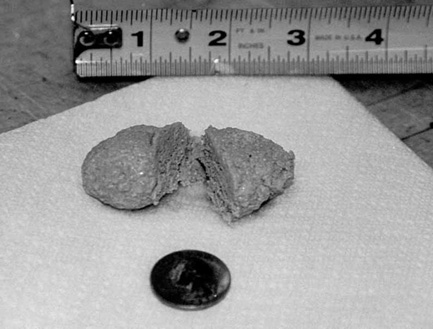By Andreas Moritz
The liver secretes bile, which passes via the two hepatic ducts into the common hepatic duct. The common hepatic duct runs for 1.5 inches before being joined by the cystic duct coming from the gallbladder. Before bile continues its journey through the common bile duct into the intestinal tract, it must flow into the gallbladder.
The gallbladder is a pear-shaped pouch that protrudes from the bile duct. It is attached to the posterior side of the liver (see Figure 1).
A normal gallbladder generally holds about two fluid ounces of bile. The bile in the gallbladder, however, is not in the same form as it was when it left the liver. In the gallbladder there is such a great active reabsorption of salt and water that the volume of bile is reduced to only one tenth of its original quantity. Bile salts are not absorbed, which means, their concentration is increased by about ten times. However, mucus is added to the bile, which turns it into a thick mucus-like material. Its high concentration makes bile the powerful digestive fluid it is.
The muscular walls of the gallbladder contract and eject bile when acid food and protein products enter the duodenum from the stomach. A more marked activity is noted if food entering the duodenum contains a high proportion of fat. The bile salts in the bile are used to emulsify the fat and facilitate its digestion. Once the bile salts have done their job and left the emulsified fat for intestinal absorption, they travel on down the intestine. Most of the bile salts are reabsorbed in the final section of the small intestine and carried back to the liver. There it is collected again in the bile and secreted into the duodenum. (Note: Intestinal congestion sharply reduces the amount of bile salts needed for proper bile production and fat digestion.)

Figure 1: Location of the gallbladder
Gallstones may be primarily made of cholesterol or calcium or pigments such as bilirubin. Cholesterol is the most common constitution, but many of the stones are of mixed composition. Besides cholesterol, calcium and bile pigments, they may contain bile salts, water and mucus, as well as toxins, bacteria and, sometimes, dead parasites. Typically, stones within the gallbladder grow in size for about eight years before noticeable symptoms begin to occur. Larger stones are generally calcified and can be detected easily through radiological means, or by using ultrasonography. Eighty five percent of gallstones found in the gallbladder measure about 3/4 inch (2 centimeters) across (see Figure 2a), although some can become as large as 2-3 inches (6 centimeters) across (see Figures 2b and 2c of a calcified gallstone I personally examined and photographed moments after it was painlessly released by a client during her 9th liver cleanse; the stone emitted an extremely noxious odor). They are formed when, due to reasons explained in The Amazing Liver and Gallbladder Flush, bile in the gallbladder becomes too saturated, and its unabsorbed constituents begin to harden.
If a gallstone does slip out of the gallbladder and becomes impacted in the cystic bile duct or common bile duct, there is very strong spasmodic contraction of the wall of the duct. The contraction helps to move the stone onwards. This causes severe pain known as biliary colic and is accompanied by considerable distension of the gallbladder. If the gallbladder is packed with gallstones, it also goes into extremely painful spasmodic muscle contractions.

Figure 2a: Gallstones in a dissected gallbladder
Gallstones can cause irritation and inflammation of the lining of the gallbladder, as well as the cystic and common bile ducts. This condition is known as cholecystitis. There may also be superimposed microbial infection. Ulceration of the tissues between the gallbladder and the duodenum or colon, with fistula formation and fibrous adhesions, is not uncommon. Gallbladder disease generally originates in the liver. When liver lobules become structurally distorted due to presence of gallstones and, eventually, fibrous tissue, venous blood pressure starts to rise in the portal vein. This, in turn, increases the blood pressure in the cystic vein that drains venous blood from the gallbladder into the portal vein. The incomplete elimination of waste products through the cystic duct causes a backup of acidic waste in the gallbladder tissue. This gradually reduces the performance of the gallbladder. The formation of gallstones is just a matter of time.

Figure 2b: A very large calcified gallstone released painlessly during the liver cleanse

Figure 2c: The same stone, but cut in half
You may share or republish this article provided you clearly mention the name of Andreas Moritz and paste a hyper link back to the post.

